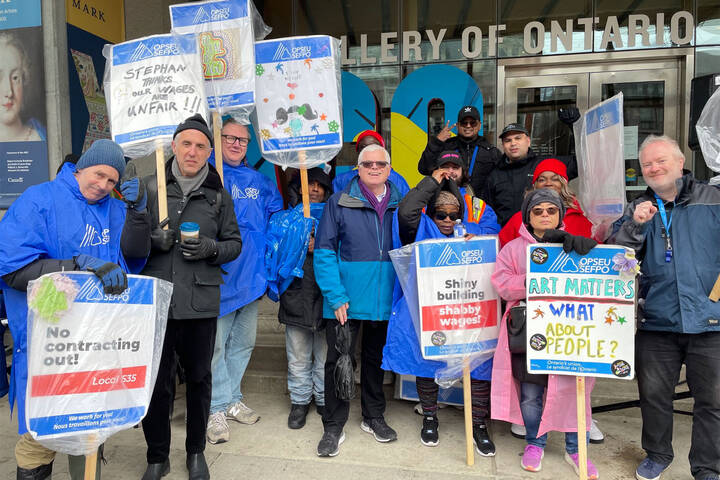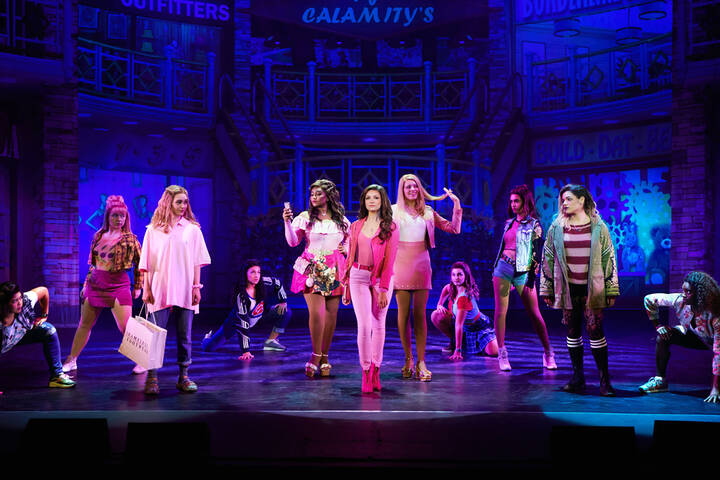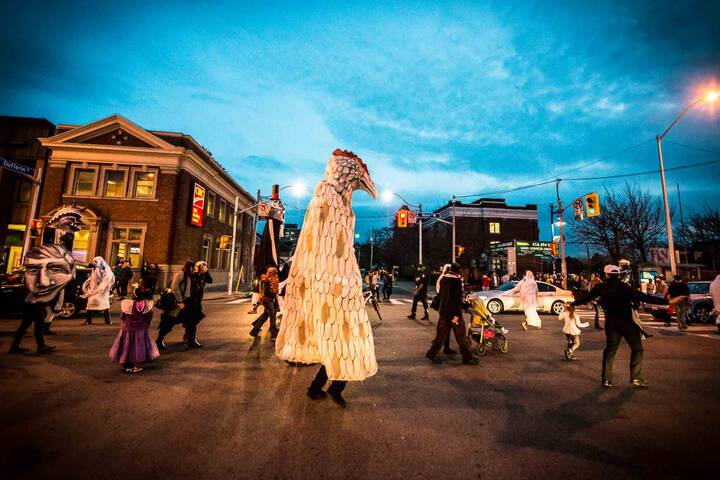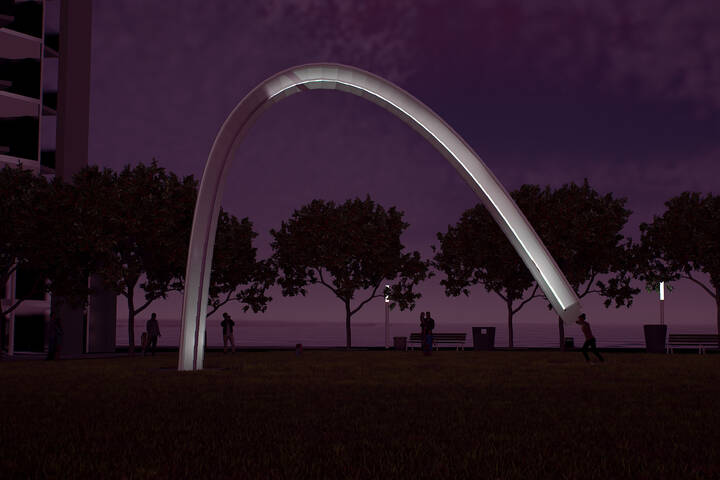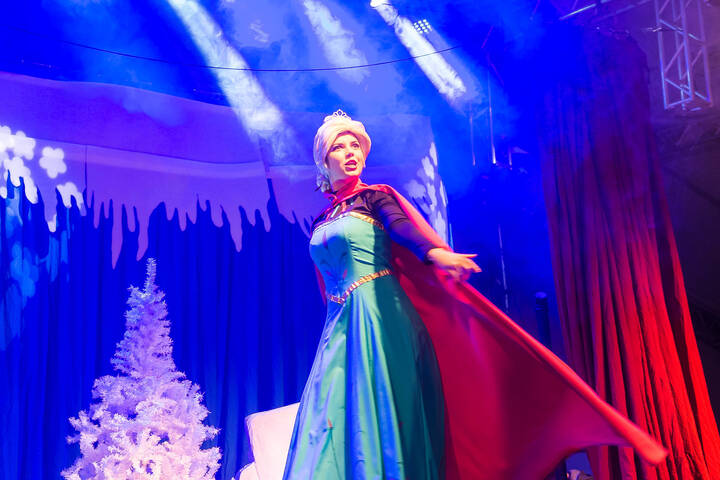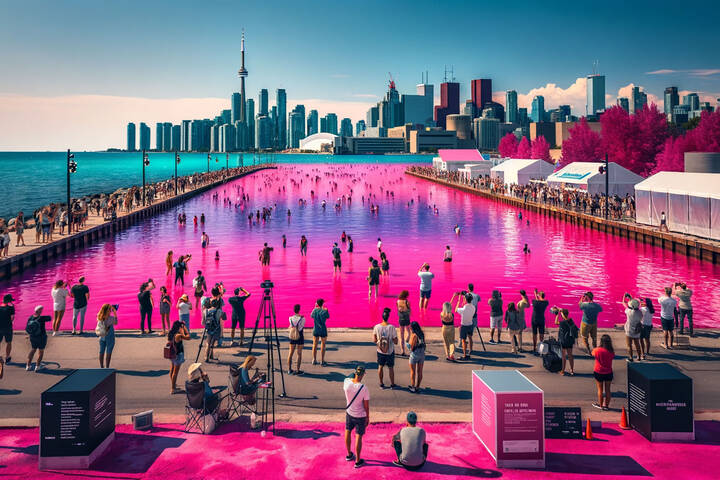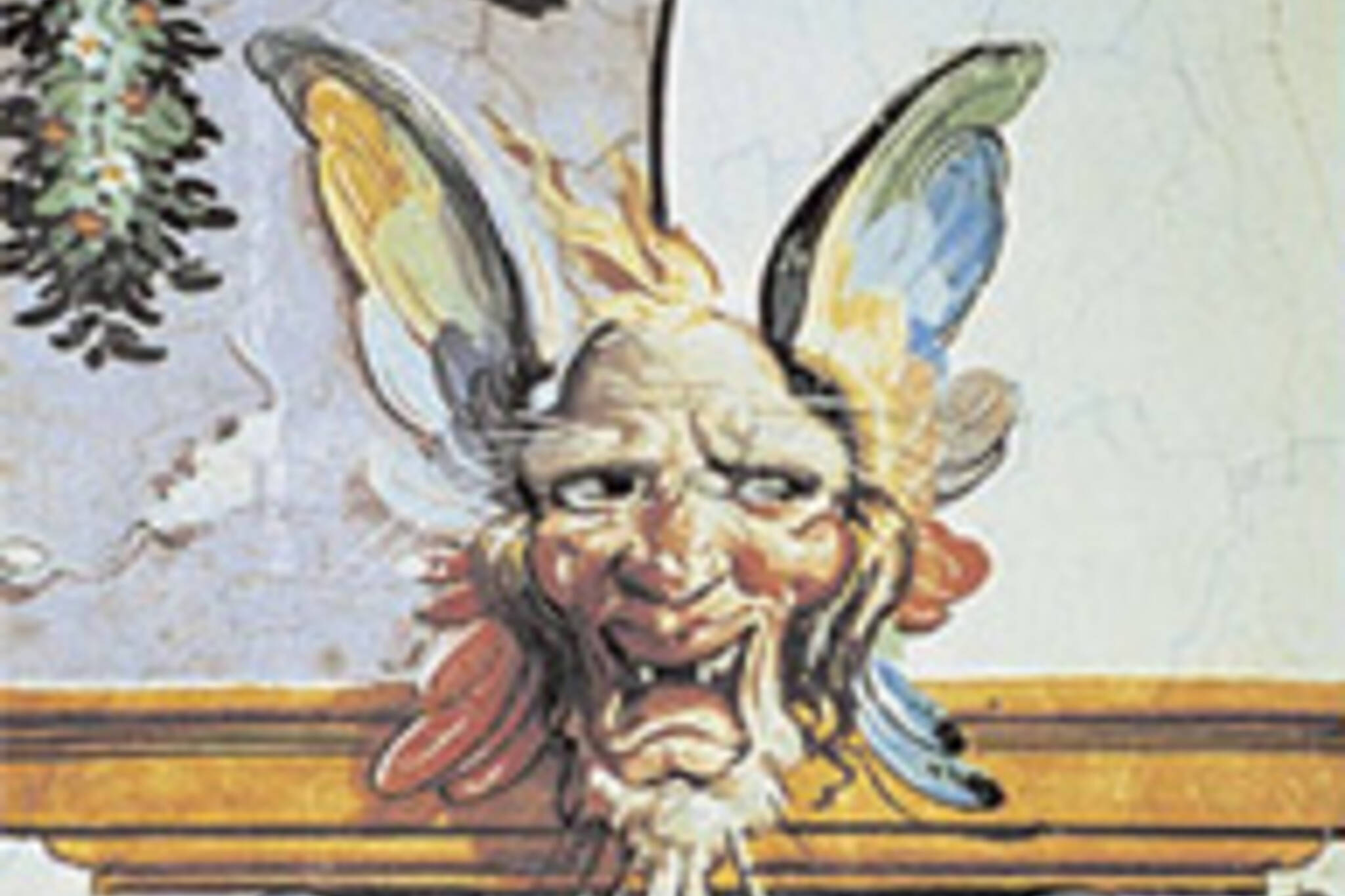
Lecture review - Robert Storr @ Harbourfront Centre
The word grotesque for me most often seems synonymous with something disgusting, although its proper definition references it's place in art history as being associated with the decorative and whimiscal representaions of things that do not exist in the real world. All of this was made very interesting through Robert Storr, who curated the 2004 Biennial at SITE Santa Fe last year, subtitled 'Disparities and Deformations: Our Grotesque'.
Robert Storr appeared at the Harbourfront's Centre's Brigantine room last Thursday night, as part of the Power Plant's International Lecture Series, to speak on the history of the grotesque in art, and he began by stating that when people ask him, 'what's your theory', he says he doesn't have one, that he prefers to describe, and through detailed description arrive at analysis by default. From here, he began with a brief bit of art-history, making reference to the grotesques and monsters that can be found as marginalia in the manuscripts and Bibles from the medieval era (although he didn't name them as medieval -by the end of the lecture he'd made the argument that the grotesque representation was found in all cultures, and claimed it was found especially in Catholic cultures, and so, medieval fauns and other monstrosities are certainly a part of that tradition).
The art which he was specifically speaking about though, according to him, begins during Italy's Renaissance period, because only then could things be labeled grotesque, a word that literally means 'grotto-like.' Grottos in this case were the underground crypts and chambers discovered in Rome and other Roman cities during the 1400s, when interest in reviving the excellence of the Ancient masters drove Italy's artists toward abandoning the inept style (and it was very much a style) of the medieval era toward mathematical precision and proportional perfection. The discovery of work that went against this Ancient ideal by the Ancients themselves, was inspiring and freed up artists to work in this manner on the side in sketches or other personal projects, or when decorating the ceiling of the Uffizi or the Vatican.
Storr described this then as an expression of whimsy and playfulness. The grotesque for him means an expression of play, of satirical ugliness, of being able to deal with taboo and vulgar subjects under the umbrella of humour. One can critique horror by fictionalizing it, which brought up a response to critics who said that in his SITE Santa Fe exhibit should have included the pictures of Abu Ghraib. He said that there was a distinct difference between the record of a horror and the depiction of one, the record being much worse than anything an artist imagines. Although this example didn't come up, we can look to the way we treat going to a horror movie as a bit of fun against actually witnessing someone get murdered to see what he's getting at.
Central to his definition of the grotesque was an element of contradiction. The Hegelian idea of Thesis/Antithesis/Synthesis behind which debate seems to be the best way to express ourselves, to argue and counterargue in order to find and work from a common ground, is instead more often one of thesis/antithesis only. Storr argued that when you have nothing but thesis and antithesis going at each other without synthesis, you're stuck, and his contention seemed to be that the grotesque was the art of this condition. Our current political situation - exacerbated in the United States (Storr is after all an American curator speaking about the ideas behind an American art exhibition) as a battle between Left vs. Right, or now, Red State vs Blue State, is one of thesis/antithesis situations without apparent synthesis. This condition seems to be part of the Western World as whole, as we do indeed seem stuck in nostalgic-marketing loops and relentless media campaigns designed to convince us that celebrities are important people.
So a situation of being stuck between opposing views expresses itself with the element of contradiction which he claims runs through examples of grotesque art. The old school models of a satyr with the ears of a donkey, a vampire as a human being with fangs, the monster as a representation of biological contradiction, to newer school models of Duchamp's stool and bicycle wheel, which enabled a vast mosaic of grotesquerie in representation throughout the 20th Century. A modern master of this would include Jeff Koons, whose vacum cleaners, according to Storr, are a kind of contemporary vanitas, the immaculate preservation of which behind glass is a still life reminding us of the presence of decay in the rest of the world, and the transience of human life, as these vacuum cleaners are supposed to outlive us all, remaining perfect as we age and die, while at the same time grotesque because they are a kind of consumerist joke.
His lecture, which went about an hour, ended basically with the argument that the expression of the grotesque challenges the prevailing ideals, or as I would put it, the hegemonic discourse. So when beautiful work is an ideal, grotesque work is the rebellion against that, and since beauty has been the ideal for centuries, the expression of contradiction and ugliness has never really gone away. Some confusion was raised with his use of the word 'universal', which he pointed out is to say that some things can be found in all cultures, however, he pointed out that there is a misconception at work which claims that the ideal of classical beauty in the ancient Greek mode (Classicism) is a universal ambition, which found itself expressed a century ago within the language of the European Empires, who defined the cultural works of the 'primitive' peoples under their jackboots as ugly and uncivilized. Perhaps it is here where the popular misunderstanding of grotesque as something repellent begins. The point Storr made is that the grotesque is not a visual language of the uncivilized, it is merely an antithesis to a dominant thesis. As this website (the file linked there is provided below) summarizes the Site Sante Fe exhibition, "Curator Robert Storr pushes the envelope of good taste with 'Disparities and Deformations: Our Grotesque.'" To say that the grotesque 'challenges good taste' is exactly Storr's point, as we should be ever aware of what the ideas behind good taste are. As the quote from Aldoph Loos' stupid "Ornament and Crime" pointed out, 'good taste' can be the repository for many intellectual ideals that degrade and belittle those who are different from us.
Related links:
1. Audio: Robert Storr is briefly interviewed in this clip and overview of the Biennial by Angela Taylor from Santa Fe last summer. The clip is an mp3 file and 6.2 MB in size. (Courtesy of Angela Taylor and Goodreads.ca)
2. Disparities and Deformations: Our Grotesque , The 2004 Biennial
3. How Grotesque! How Grand! review of the exhibition by Blake Gopnik, from last July in the Washington Post
(image courtesy of sitesantafe.org)
Latest Videos
Latest Videos
Join the conversation Load comments
